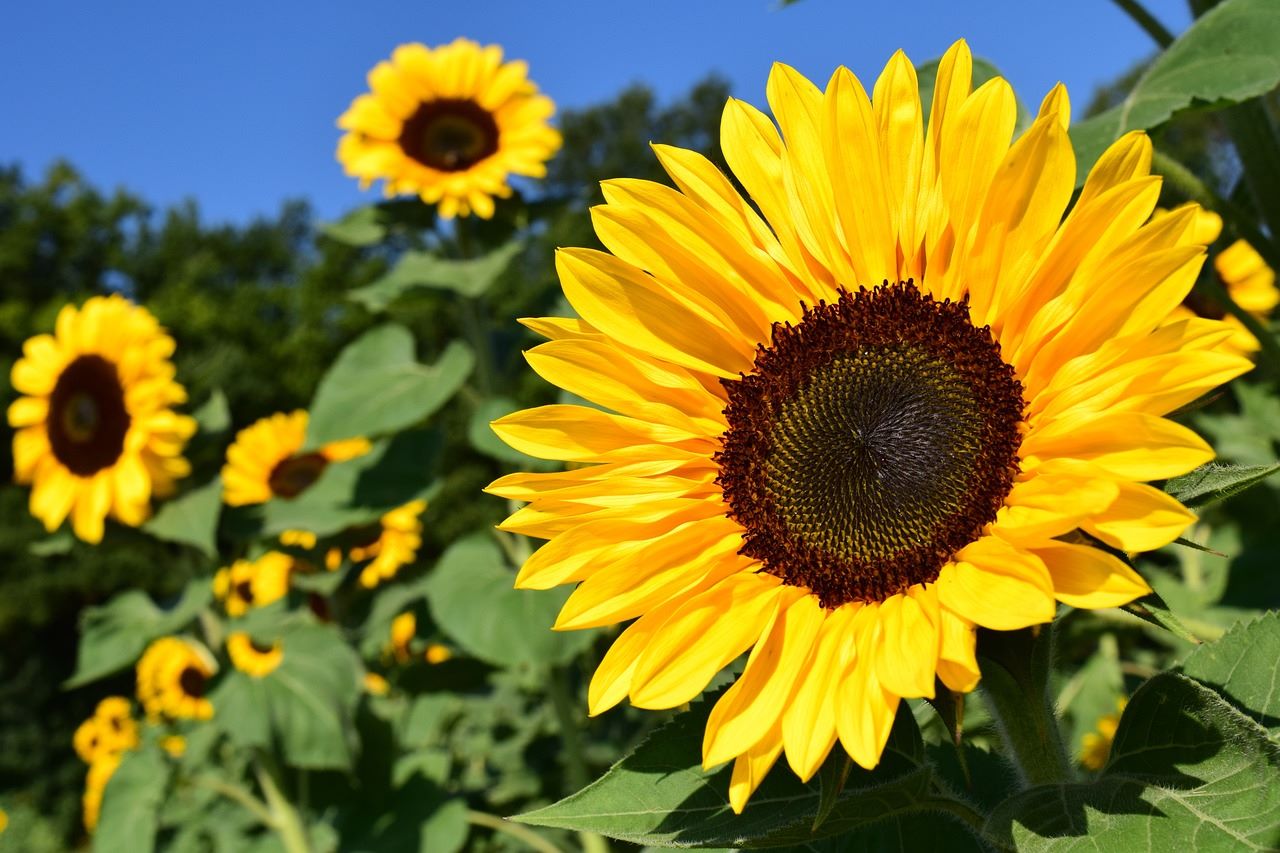
It is known that sunflowers face the sun as it crosses the sky. But how do sunflowers “see” the sun so they can turn and follow it?
News research Published in PLOS Biology, UCLA plant biologists show that plants use a different mechanism than scientists previously thought.
“This was a big surprise for us.” Stacy Harmer, a professor of plant biology at UCLA and one of the study’s lead authors, said:
How do they see the sun?
Most plants exhibit phototropism, which is called the movement of plant parts, as they grow, in the direction of the photosynthetic stimulus. Scientists have hypothesized that heliotropism is the toxicity of sunflowersThat is, the ability to head toward the sun will depend on the same basic mechanism. A molecule called phototropin is involved in this mechanism and interacts with light in the blue part of the spectrum.
Sunflowers “turn” toward the sun and grow a little more on the east side of the stem — pushing the “head” toward the west — during the day. They grow a little more on the west side at night, so that the “head” turns east again. Stacy Harmer’s laboratory at the University of California He previously demonstrated how sunflowers use their internal biological clock to predict sunrise and coordinate morning flower opening with the emergence of insects for pollination.
What the new research reveals
In the new study, the researchers looked at which genes were “turned on” in sunflowers grown in laboratory rooms and in sunflowers grown outdoors.
Inside, Sunflowers were grown directly toward the light, which resulted in the activation of phototropin-related genes. However, plants grown outdoors facing the sun showed a completely different pattern of gene expression. There was no obvious difference in phototropin between one side of the shoot and the other.
Researchers have not yet identified the genes involved in heliotropism. “We seem to have ruled out the optical path, but we haven’t found any clear evidence (of movement toward the Sun).” Stacy Harmer said.
Block blue, UV, red or far-red light using shadow boxes It had no effect on how heliotropism worked. This suggests that there are likely multiple pathways, responding to different wavelengths of light, to achieve the same goal: movement toward light. Future research will examine protein regulation in plants to provide answers.
Sunflowers “learn” quickly. When the lab-grown plants were moved outside, they began tracking the sun on the first day, Stacy Harmer said. This behavior was accompanied by a wave of gene expression on the shaded side of the plant, which was not repeated in the following days. This indicates that a kind of “rewiring” has occurred, according to the scientist.
In addition to revealing previously unknown pathways for light sensing and growth in plants, this discovery has broader significance, according to Stacey Harmer. “Things you specify in a controlled environment, like a growth chamber, may not work in the real world.” The scientist said.

“Total alcohol fanatic. Coffee junkie. Amateur twitter evangelist. Wannabe zombie enthusiast.”





More Stories
Is this what the PS5 Pro will look like? (Image)
Finally, Windows 11 24H2 update significantly boosts AMD Ryzen – Windows 11 performance
Heart Surgeon Reveals The 4 Things He ‘Totally Avoids’ In His Life